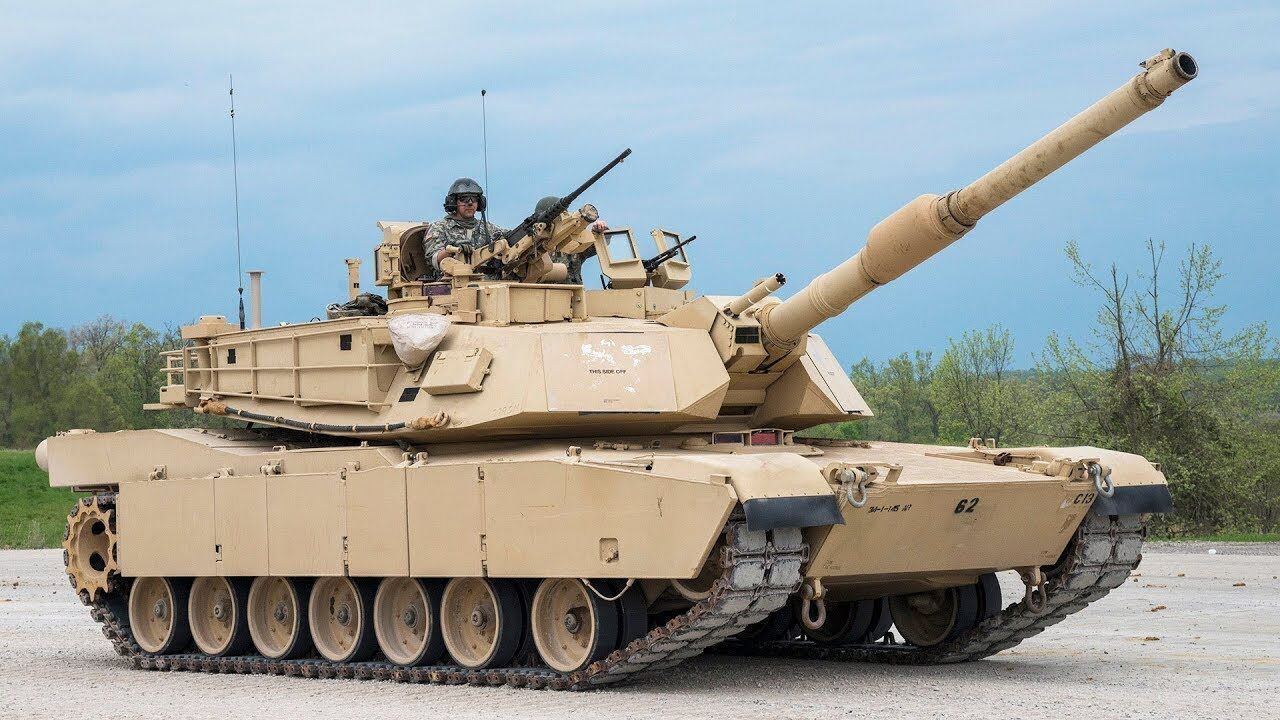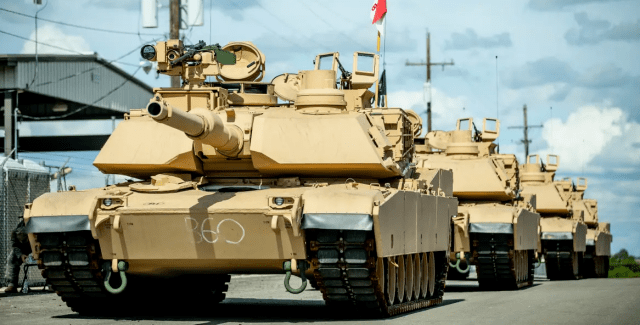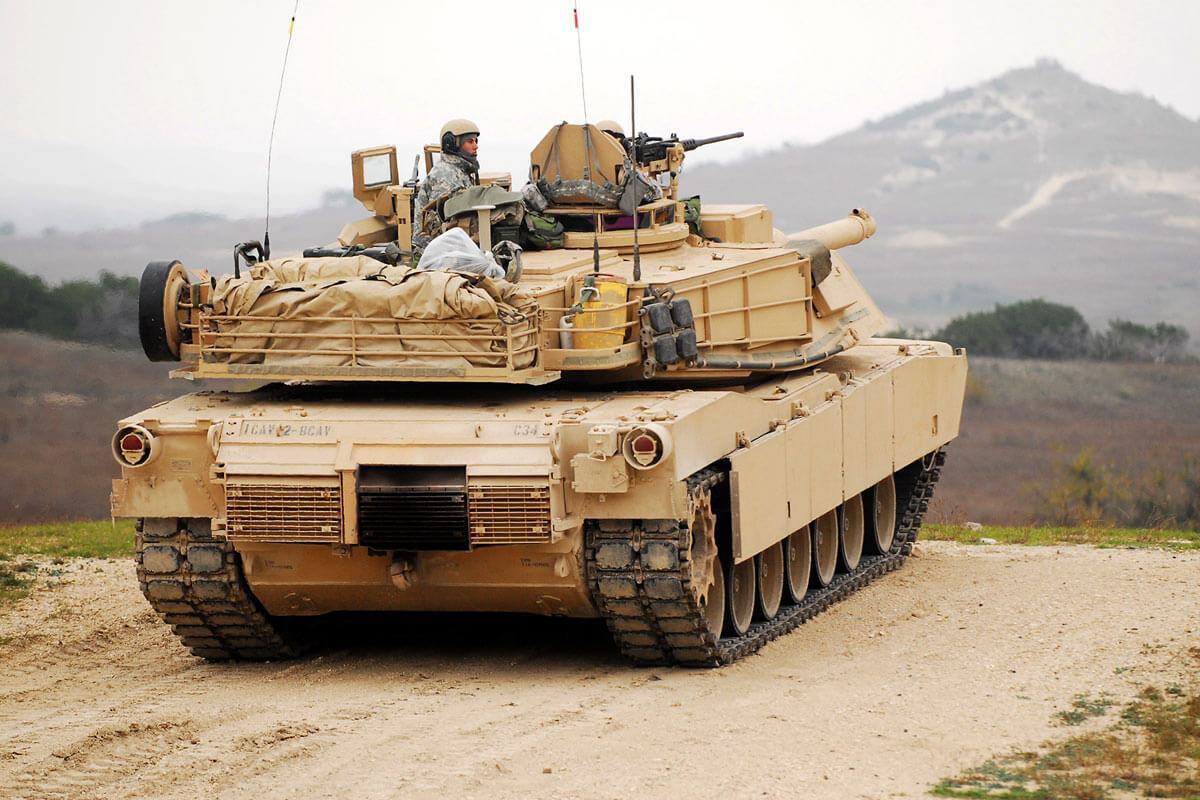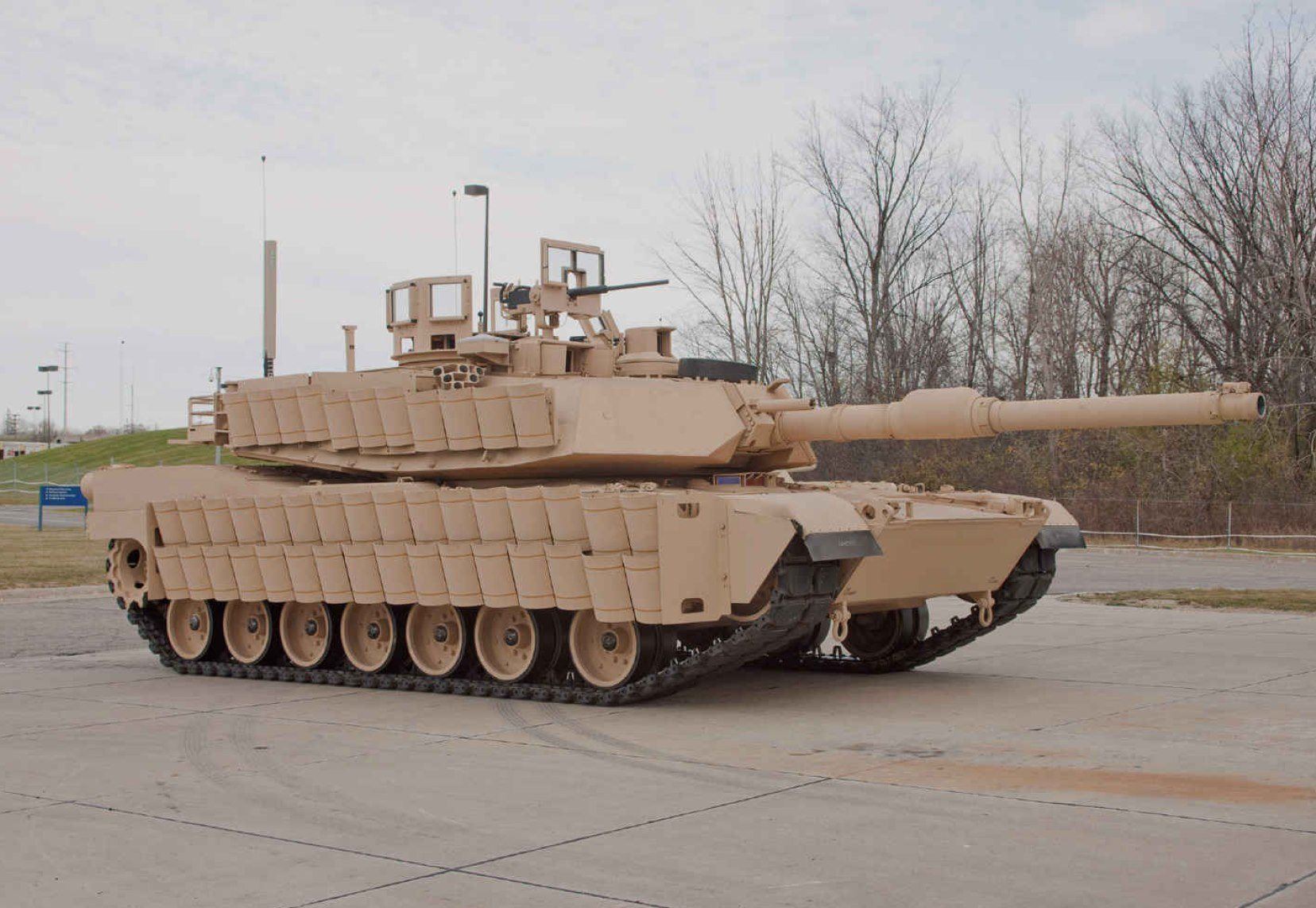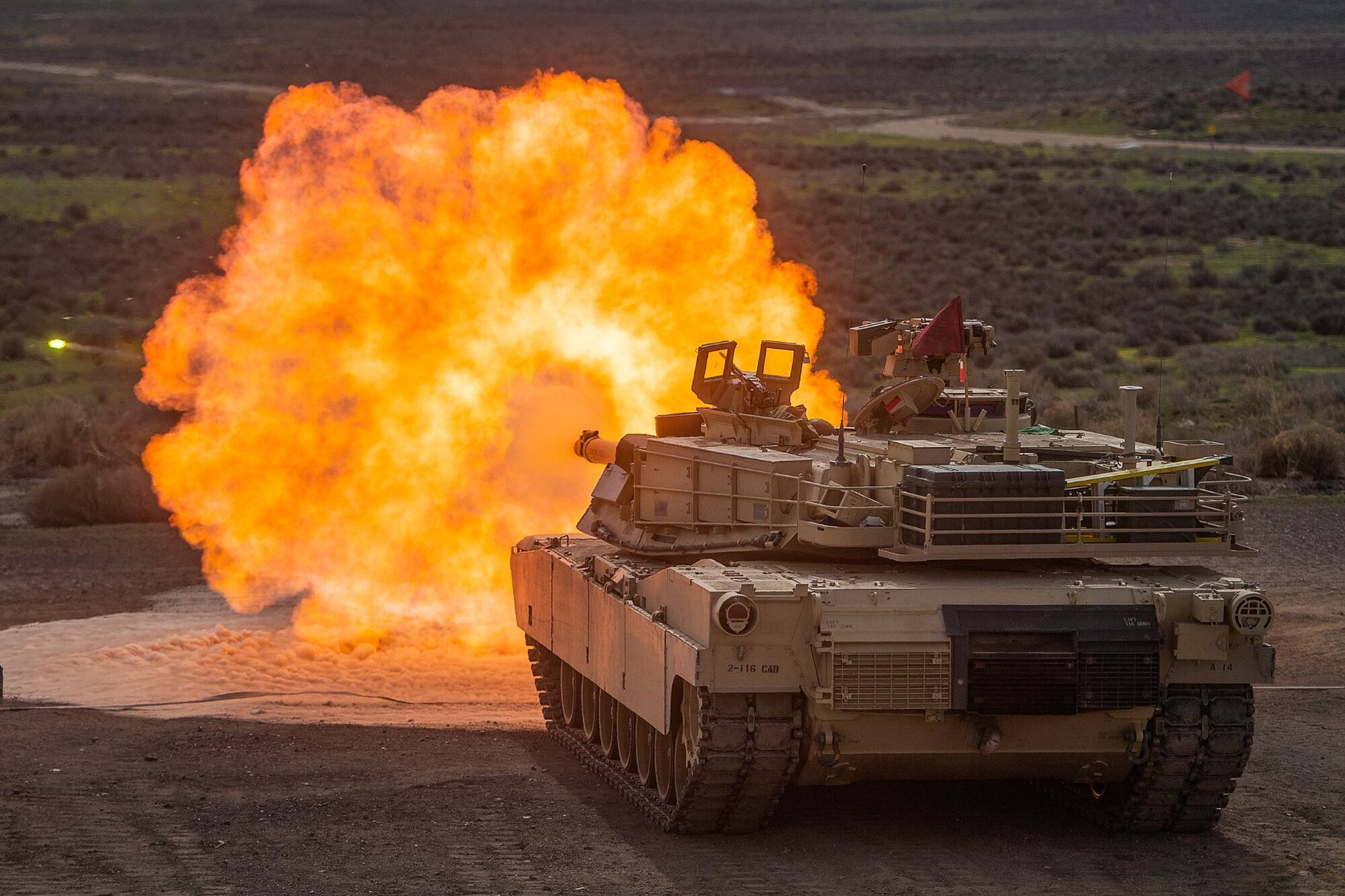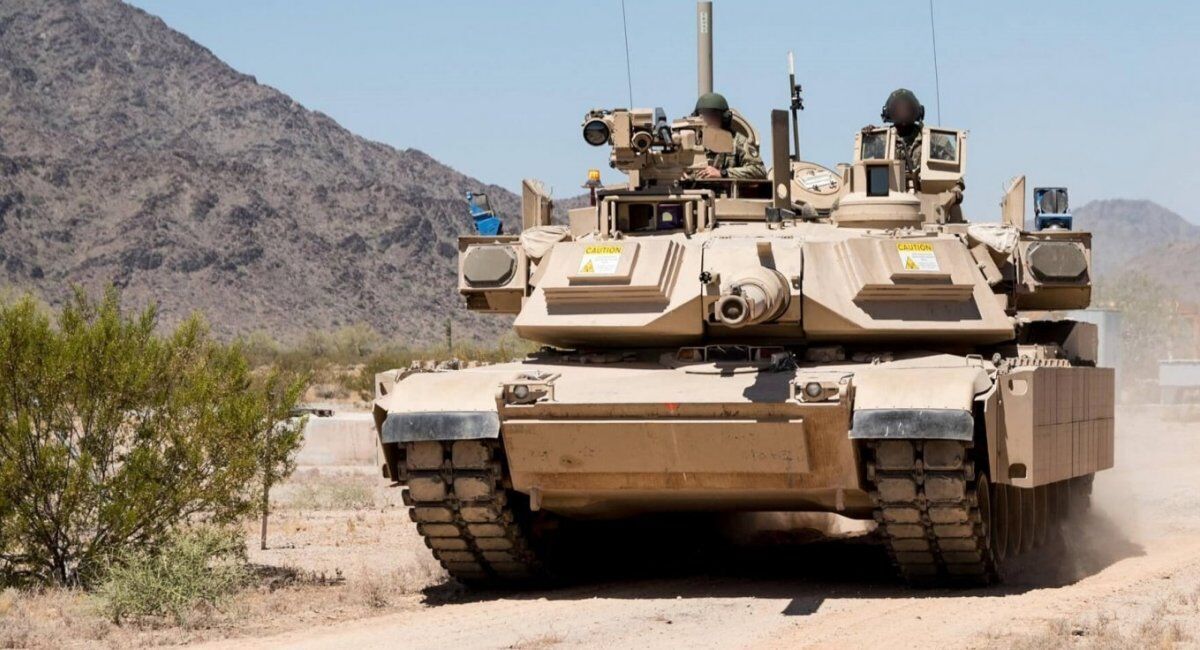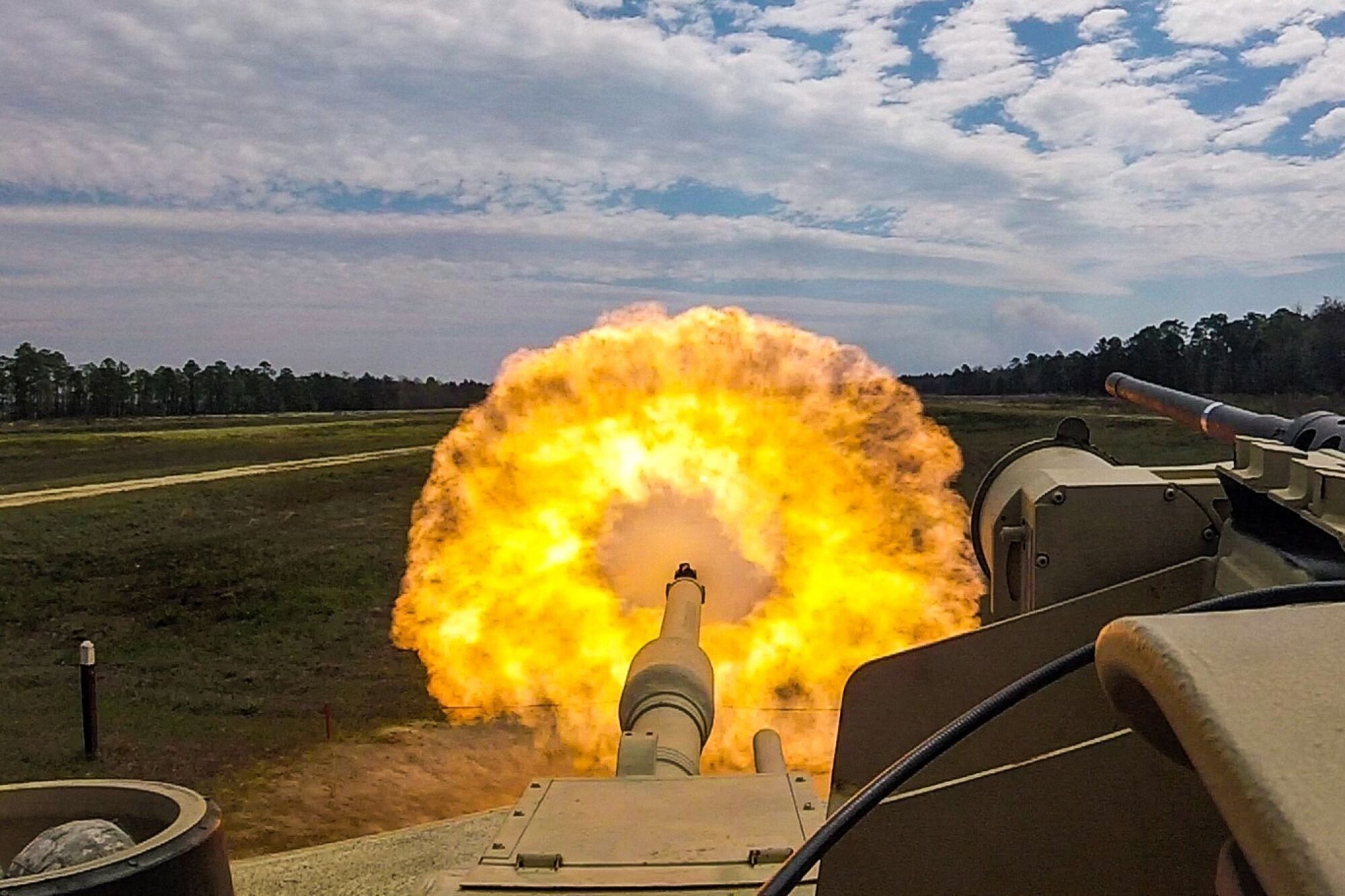War in Ukraine
The first M1 Abrams tanks are already in Ukraine: how the heavy armor can help the Armed Forces in the counteroffensive
On January 24, 2023, the American edition of Politico, citing its own sources in Washington, reported that the White House was leaning towards sending a "significant number" of American-made M1 Abrams tanks to Ukraine. The very next day, US President Joe Biden officially announced the shipment of the first batch of Abrams to Ukraine. It was 31 units of combat vehicles worth $400 million.
However, the tanks themselves had to wait exactly eight months - on September 25, 2023, President of Ukraine Volodymyr Zelenskyy officially announced that American Abrams tanks had already arrived in Ukraine and were preparing to reinforce the Armed Forces brigades.
OBOZREVATEL figured out what kind of tanks they are and how they will benefit the Armed Forces of Ukraine.
Background
Since the beginning of the war, heavy Western-made tanks have been on the list of weapons and military equipment that Ukraine needs from its Western partners. However, they have long refused to provide Kyiv with heavy offensive weapons, coming up with various excuses ranging from attempts to avoid a potential escalation of the war to unwillingness to provoke Russian President Putin.
A conditional breakthrough occurred on January 4, 2023, when France promised to provide Ukraine with AMX-10 RC "wheeled tanks" of its own production. Although they can hardly be called full-fledged tanks, they have fulfilled their information mission and started a new trend. On January 15, the United Kingdom officially announced the transfer of 14 Challenger 2 tanks to Ukraine.
Subsequently, during the eighth meeting of the contact group on Ukraine's defense (Ramstein format), 12 countries formed a "leopard coalition" and agreed to provide Ukraine with about 100 Leopard 2 tanks if the German government agreed to re-export them (according to the rules of the international arms market, re-export of weapons and military equipment is allowed only with the consent of the country of origin).
For his part, German Chancellor Olaf Scholz relied on the latter both in the matter of Germany's provision of tanks and in the matter of re-export permission. As one of his arguments, he said that Germany was ready to give Ukraine Leopards only after the United States had sent its Abrams.
The United States first officially responded that each country should make its own sovereign decision on what kind of security assistance and equipment it is ready to provide to Kyiv, and then equally officially announced that 31 M1 Abrams tanks would be sent to Ukraine.
Thus, it appears that by his reluctance to "pump Ukraine with weapons," German Chancellor Olaf Scholz has further accelerated this process.
What kind of tank is it
The M1 Abrams ("Abrams" - named after General Creighton Abrams, former Chief of Staff of the United States Army and commander of the US Armed Forces in Vietnam) is a third-generation American main battle tank.
The tank was developed by Chrysler Defense (now General Dynamics Land Systems) and has been in service since 1980, being the main main battle tank of the US Army. In addition to the United States, the tank is in service with the armies of Australia, Egypt, Kuwait, Saudi Arabia, Iraq, Morocco, Taiwan, and Poland. The United States plans to extend the service life of the tank until 2050.
The Abrams is built according to the classical tank scheme with a crew of four (commander, gunner, loader, driver) and a high-powered ballistic gun as the main weapon.
The M1 Abrams tank is equipped with a 1500 horsepower Honeywell AGT 1500 gas turbine engine with a six-speed (four forward, two reverse) Allison X-1100-3B automatic transmission.
The tank can reach a maximum speed of 72 km/h on paved roads and 48 km/h on rough terrain. With the engine speed regulator turned off, the speed can reach up to 97 km/h on the highway, but this can be traumatic for the crew.
It is interesting that the engine can run on diesel fuel, kerosene, motor gasoline of any brand, fuel for JP-4 or JP-8 jet engines. For example, the US Army uses JP-8 jet fuel to simplify logistics. Australian tank forces use diesel fuel for the same purpose. Jet fuel provides better acceleration than diesel, but it also consumes twice as much.
The JP-8's 1,900-liter fuel tanks on jet fuel provide an operational range of only 410 kilometers (for comparison, the Leopard diesel tank has 2,160-liter tanks that provide an operational range of 500 kilometers).
Although the tank is not designed to carry armored troops, some innovations allow infantry to ride the tank in combat conditions, positioned behind the aft turret. In doing so, soldiers can secure themselves and their equipment with ropes and straps.
Modifications
There are currently three main versions of the M1 Abrams: M1, M1A1, and M1A2, which differed in terms of improvements to weapons, protection systems, and electronics (it should be noted that the name M1 Abrams is a generic name for all models).
The M1 is the first version of the tank to be adopted for service and the basic version. It was produced from 1979 to 1985. Its feature is the 105-mm rifled tank gun M68A1 (a modernized version of the British L7 gun).
The M1A1 is the most mass-produced version of the tank. It was produced from 1985 to 1992. In addition to improved armor, modern electronics, and a weapon of mass destruction protection system, the M256A1 120-mm smoothbore tank gun was introduced, an American licensed copy of the German L44 gun developed by Rheinmetall (mounted on Leopard 2 tanks up to and including the A5 model).
The M1A2 is the most recent production version, with production beginning in 1992. Tanks of this version have an autonomous thermal imaging panoramic sight for the commander, a new gunner's sight with two-plane stabilization and an eye-safe rangefinder, a new command turret with eight periscopes (instead of six in the previous version), a thermal imaging observation device for the driver's mechanic, an IVIS combat system with information management, enhanced armor, etc.
Armor protection
The M1 Abrams tank is considered to be one of the most heavily armored tanks in the world, with both its turret and hull covered with armor based on the British Chobham design, which is a composite armor formed from several layers of different alloys of armor steel, ceramics, plastic composites and Kevlar.
It can also be equipped with dynamic protection over the chassis, and, if necessary, dynamic armor plates over the stern and fuel tanks to protect against anti-tank guided missiles (ATGM). Protection against debris is provided by layers of Kevlar.
The M1A1 tanks received improved depleted uranium armor packages, which are located in the front of the turret and the front of the hull. Armor reinforced in this way provides significantly greater protection than other types of anti-tank weapons, but at the cost of a significant increase in tank weight because depleted uranium is 1.7 times denser than lead. Tanks of this model weigh 61.3 tons.
To enhance protection in urban environments, dynamic protection is installed on the sides of the hull and anti-collision grilles on the stern of the hull and turret. The gunner receives a machine gun with a protective shield. It is possible to install large transparent shields for the commander and gunner or a remote-controlled module with a machine gun. And since 2006, the Tank Urban Survival Kit (TUSK) has been used as an additional armor protection.
For additional protection, the tank's turret is equipped with two six-barrel or eight-barrel smoke grenade launchers that can create a thick smoke screen, making it difficult for enemy targets to target the tank.
Additionally, some models are equipped with the Softkill Active Protection System, which can interfere with the guidance systems of some anti-tank missile systems.
Fuel and ammunition are located in separate armored compartments with ejection panels, which protects the crew from the risk of detonation of their own ammunition in the event of a tank hit. In order to prevent a fire in the crew compartment, the tank is equipped with a gas fire extinguishing system that automatically turns on and extinguishes the fire in seconds.
Interestingly, during the last war in Iraq, the Abrams suffered only two types of damage: from small anti-tank weapons (ATGM) used by Iraqi infantrymen in an ambush and from being blown up by anti-tank mines. No damage was recorded from enemy artillery or tank fire.
Armament
As already mentioned, the main armament of the original M1 model is the M68A1 105-mm rifled tank gun (a modernized version of the British L7), which is stabilized in two planes. The ammunition includes 55 unitary shells with a metal jacket.
The main armament of the M1A1 and M1A2 Abrams is the 120-mm smoothbore tank gun M256A1, developed by the German company Rheinmetall and manufactured under license in the United States. It is capable of firing various types of projectiles: armor-piercing sub-caliber feathered projectile with a hinged tray, high explosive, sub-caliber high explosive fragmentation, sub-caliber concrete-piercing, high-explosive, buckshot, etc.
The M1A1 tanks are capable of inflicting damage on the enemy at distances of more than 2,500 meters, while the effective range of the guns of Soviet and Russian tanks barely reaches 2,000 meters.
Three machine guns serve as additional weapons:
- The 12.7 mm M2HB machine gun, which is mounted on top of the turret in front of the commander's hatch and can be operated remotely. The TUSK can be equipped with a Mk 19 grenade launcher instead.
- 7.62 mm M240 machine gun in front of the loading hatch on the side machine gun mount. It can be equipped with protective shields and night vision devices for firing in low visibility conditions.
- The second 7.62 mm M240 twin machine gun is located to the right of the gun. It is controlled through the central computer of the fire control system used for the gun.
Ammunition
The M1 Abrams tank primarily uses sub-caliber shells. Unlike conventional shells, sub-caliber shells have a diameter of the impactor that is smaller than the caliber of the gun, which allows for a much higher muzzle velocity.
Armor-piercing sub-caliber feathered projectile with a hinged tray M829, M829A1, M828A2, M829A3. This is a type of armor-piercing projectile used to destroy modern armored vehicles. The main idea is to create a long and thin shot where all the kinetic energy is concentrated in a small area. The aerodynamic stability and accuracy are ensured by the arrow-like plumage.
The M830 cumulative projectile. This is a main-purpose artillery shell with a high explosive charge designed to fire at armored targets (tanks, armored personnel carriers, armored personnel carriers, etc.), as well as at reinforced concrete fortifications. The explosion produces a thin cumulative jet directed along the axis of the projectile, which, when it encounters an obstacle, creates high pressure and thus penetrates it.
M830A1 high explosive fragmentation sub-caliber projectile. This is a dual-action artillery shell that combines a charge of cumulative and fragmentation effect. It is designed to engage all types of targets typical of cannon artillery: armored vehicles, fortifications and enemy manpower. This is a universal projectile that is included in the ammunition of almost all modern tanks, and is also used in self-propelled artillery, rocket artillery, anti-tank missiles and cluster munitions.
M908 concrete-piercing high-explosive sub-caliber projectile. This is a type of special-purpose concrete-piercing artillery shell designed to destroy capital fortifications made of reinforced concrete, strong stone and brick buildings with simultaneous destruction of personnel inside the defensive structures.
M1028 mapping projectile. This is a projectile whose internal cavity is filled with ready-made destructive elements. In this case, it contains 1,098 pieces of 9.5-mm tungsten balls, which cause lethal effect at a distance of up to 600 meters from the explosion site. It is designed primarily to engage openly positioned enemy manpower. It is also highly effective in making gaps for infantry in brick and cinder block walls, as well as in reinforced concrete walls at distances of up to 75 meters.
Prospects
Thus, Ukraine is to receive a total of 31 M1 Abrams tanks of an unknown modification. This will be enough to form either one tank battalion according to the standards of the Armed Forces (31 tanks) or three tank companies in different brigades or battalions.
Given the use of Soviet T-80 tanks with gas turbine propulsion in the Ukrainian Armed Forces, which are mainly in service with airborne assault troops and marines, it is logical to assume that gas turbine Abrams will be used in a similar way and will not be used in tank battles, but to provide firepower when assaulting populated areas by airborne or infantry.
Although it's no secret that the transfer of M1 Abrams tanks to Ukraine is primarily for political purposes - to unblock the issue of massive transfer of German Leopard 2 tanks, which are more adapted to Ukrainian realities.
By the way, the Pentagon itself says that the difficulties with the decision to supply M1 Abrams were not so much due to Washington's reluctance, the cost of the tanks themselves, or the weakening of the US Army after their alienation, but rather to potential problems with the maintenance of these combat vehicles. As they consume a lot of fuel, they will require complex logistics for repair and maintenance, and crew training will take a long time.
Read also: Challenger and Leopard: how Western tanks can strengthen the Armed Forces of Ukraine
Only verified information is available on our Obozrevatel Telegram channel and Viber. Do not fall for fakes!







